Dive into the delicious world of cocoa and discover how this humble bean turns into the chocolate bars we can’t get enough of! Learn all about how cocoa is made, where it’s from, and how to cook with it!
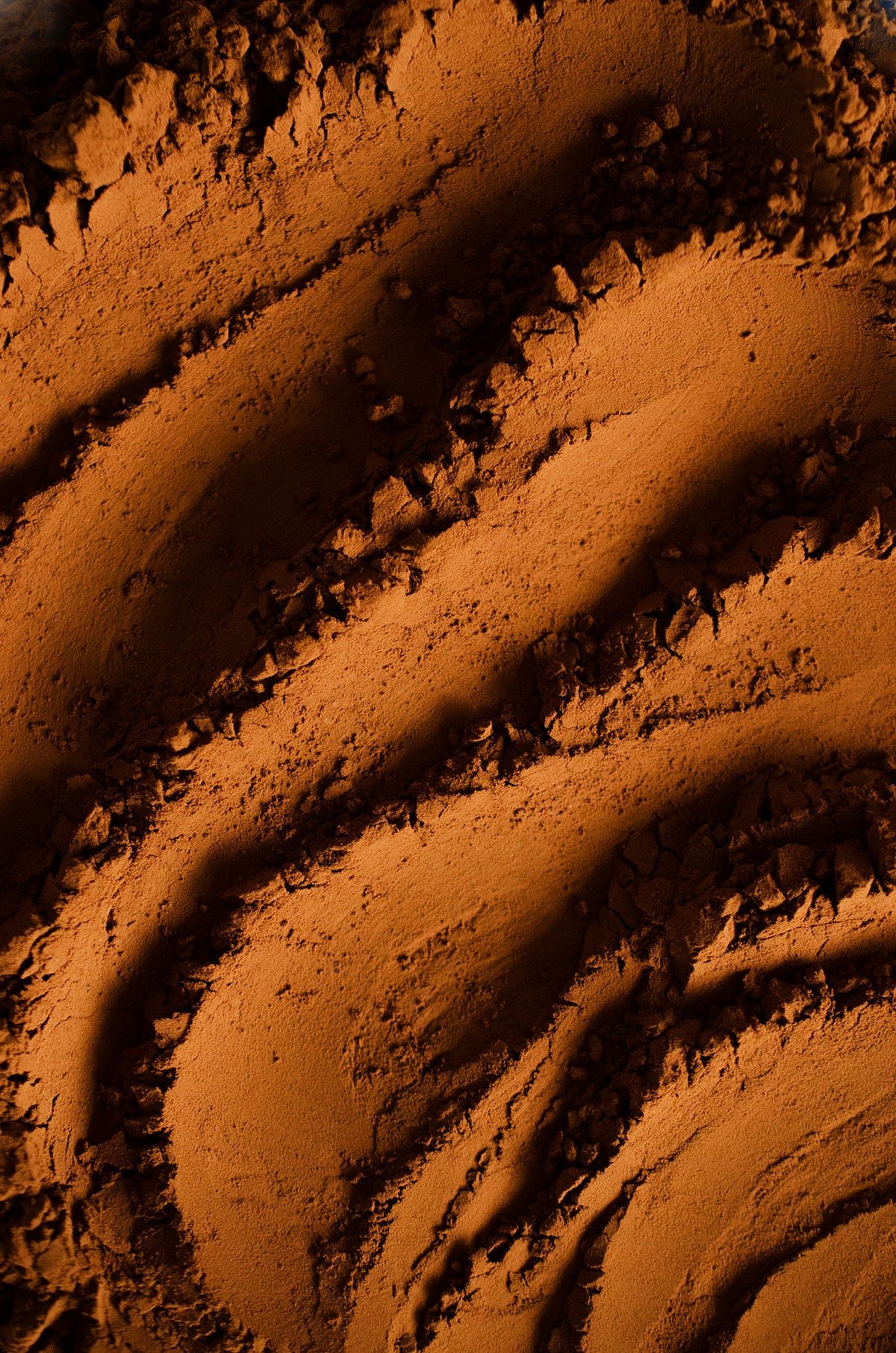
What is Cocoa?
Cocoa comes from the seeds of the cacao tree, scientifically known as ‘Theobroma cacao’. The seeds, commonly referred to as cocoa beans, are nestled inside large, colorful pods that grow directly from the trunk and branches of the tree.
Cocoa is the delicious result of fermented and roasted cacao beans, which are basically the seeds of the cacao tree. These seeds are native to the Americans, and were even once used as currency (that’s my kind of society). Nowadays, 70% of the cacao in the world is grown in West Africa and is then shipped off to be made into chocolate.
Curious about the flavor differences between raw cacao and processed cocoa? Here’s our deep dive into cacao vs cocoa!
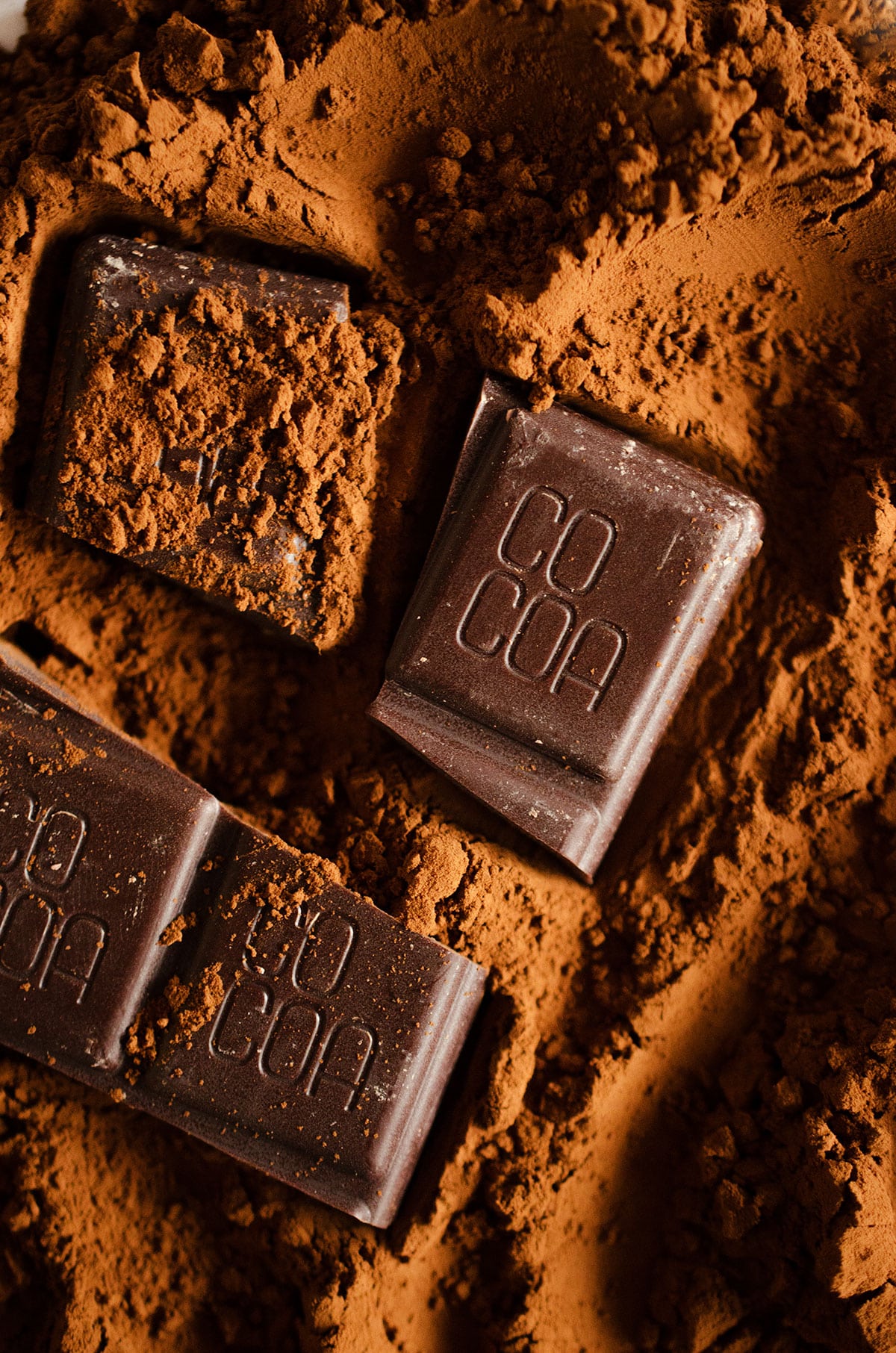
Where is chocolate from?
The equatorial belt, roughly between 20 degrees north and 20 degrees south of the Equator, provides the ideal conditions for cacao trees: consistent temperatures, ample rainfall, and high humidity. This band includes parts of Central and South America, West Africa, and Southeast Asia, which together form the heart of global cacao production.
- West Africa: This region is the powerhouse of cacao production, with countries like Ivory Coast and Ghana leading the pack. Together, they account for over 60% of the world’s cacao supply. The area’s climate provides ideal conditions for cacao trees to thrive.
- South America: Countries like Ecuador, Brazil, and Peru are significant contributors to the global cacao market. Ecuador is renowned for its fine-flavor cacao, a variety highly prized in the chocolate world.
- Central America: Nations such as the Dominican Republic and Nicaragua also play a role in cacao production, with a focus on both quantity and quality. These regions are known for their diverse cacao varieties.
- Southeast Asia: Indonesia, in particular, has become a notable player in the cacao industry, contributing significantly to the global production. The region’s climate mirrors that of the traditional cacao-growing areas, supporting cacao cultivation.
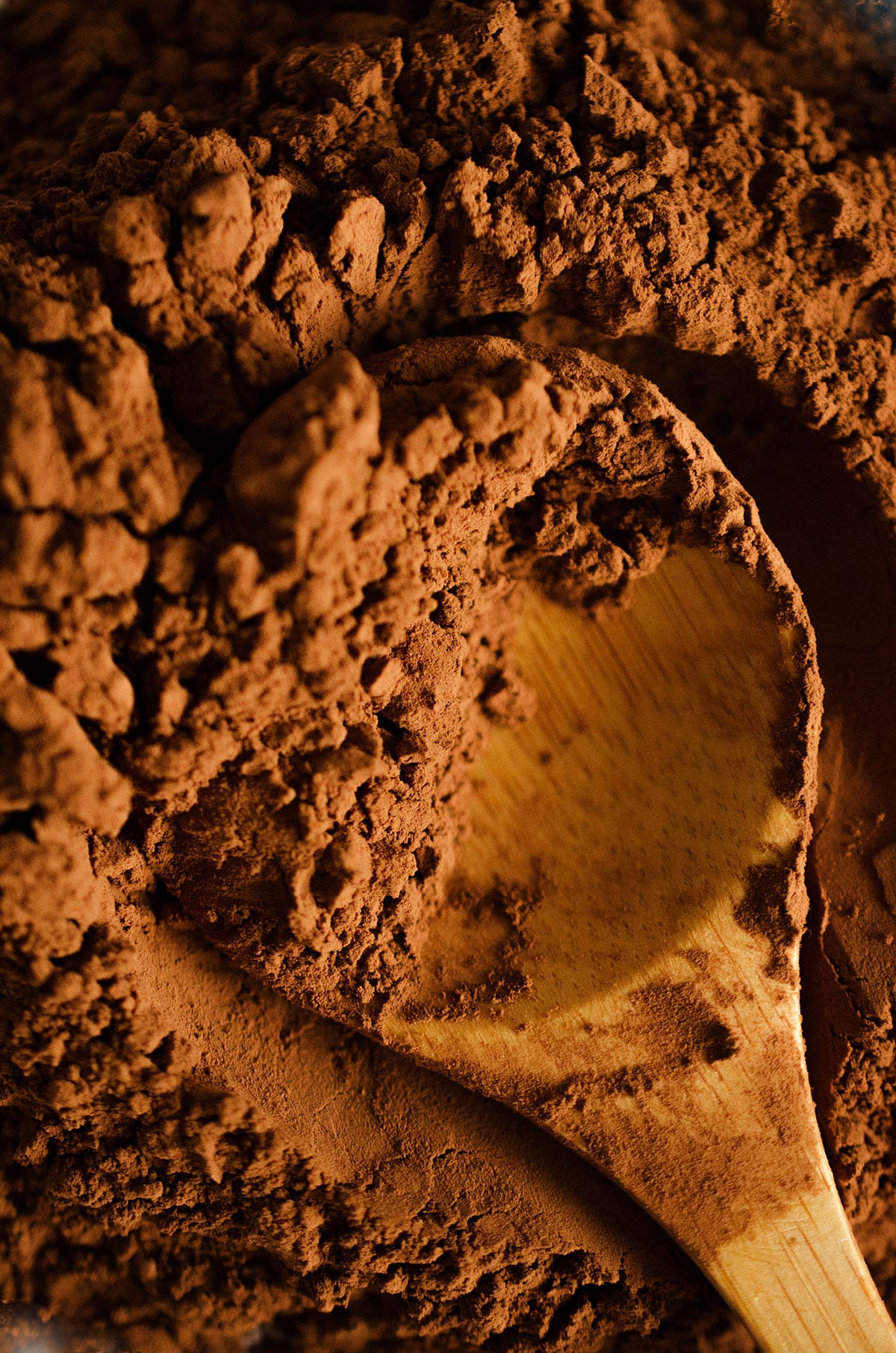
How is chocolate made?
The cacao pods are fermented for about a week, dried, then roasted. After it’s roasted, we call this cocoa! The cocoa seeds, or nibs, are then ground into a paste, sort of like nut butter, consisting of the cocoa butter and cocoa solids. The solids are what will be used by the chocolate maker to make chocolate, along with milk, sugar, and a bit of cocoa butter.
1. Harvesting: Where It All Begins
Our chocolate story starts in lush locales like the Ivory Coast and Ecuador, where cocoa trees bear fruit. These pods, each harboring precious cocoa beans, are carefully harvested by hand. It’s the first step in a meticulous process that ensures only the best beans make the cut. Due to the labor intensive process of harvesting cacao, it’s important to look for fair trade chocolate.
2. Fermentation: Flavor’s First Flourish
Post-harvest, the raw cacao beans undergo a fermentation process, a critical stage where flavor begins to blossom. Removed from their pods, the beans are placed in shallow trays, often under banana leaves or in wooden boxes. This natural process, letting bacteria and yeast work away at the raw cocoa beans, unlocks the deep, complex flavors we associate with chocolate.
3. Drying: Preparing for Travel
Next, it’s time to dry the beans. Spread out under the sun, they slowly lose moisture, becoming more stable for transportation. This step is as vital as it is natural, ensuring the beans don’t spoil on their journey to chocolate factories around the world.
4. Roasting: Flavor’s Big Moment
Upon arrival at the chocolate manufacturer, the beans are roasted, a pivotal moment in flavor development. Roasting temperatures and durations vary, but the goal remains the same: to coax out the rich, nuanced flavors hidden within each bean.
5. Grinding and Conching: The Texture Transformation
Post-roasting, the beans are ground into cocoa liquor, a paste that forms the base of all chocolate products. This mixture is then ‘conched’, a process of heating and mixing that refines the chocolate’s texture and flavor. Think of it as the chocolate getting a luxurious, long massage.
6. Tempering: The Final Touch
Finally, the chocolate is tempered, a careful process of heating and cooling that stabilizes it. This gives chocolate its signature glossy finish and satisfying snap. It’s the last step in a journey full of care, craft, and a touch of magic.
From the tropical farms to your favorite chocolate bar, every step in this process is a blend of art and science, tradition and innovation. Next time you savor a piece of chocolate, remember the incredible journey it’s been on – from a simple cocoa bean to the delightful treat in your hand.
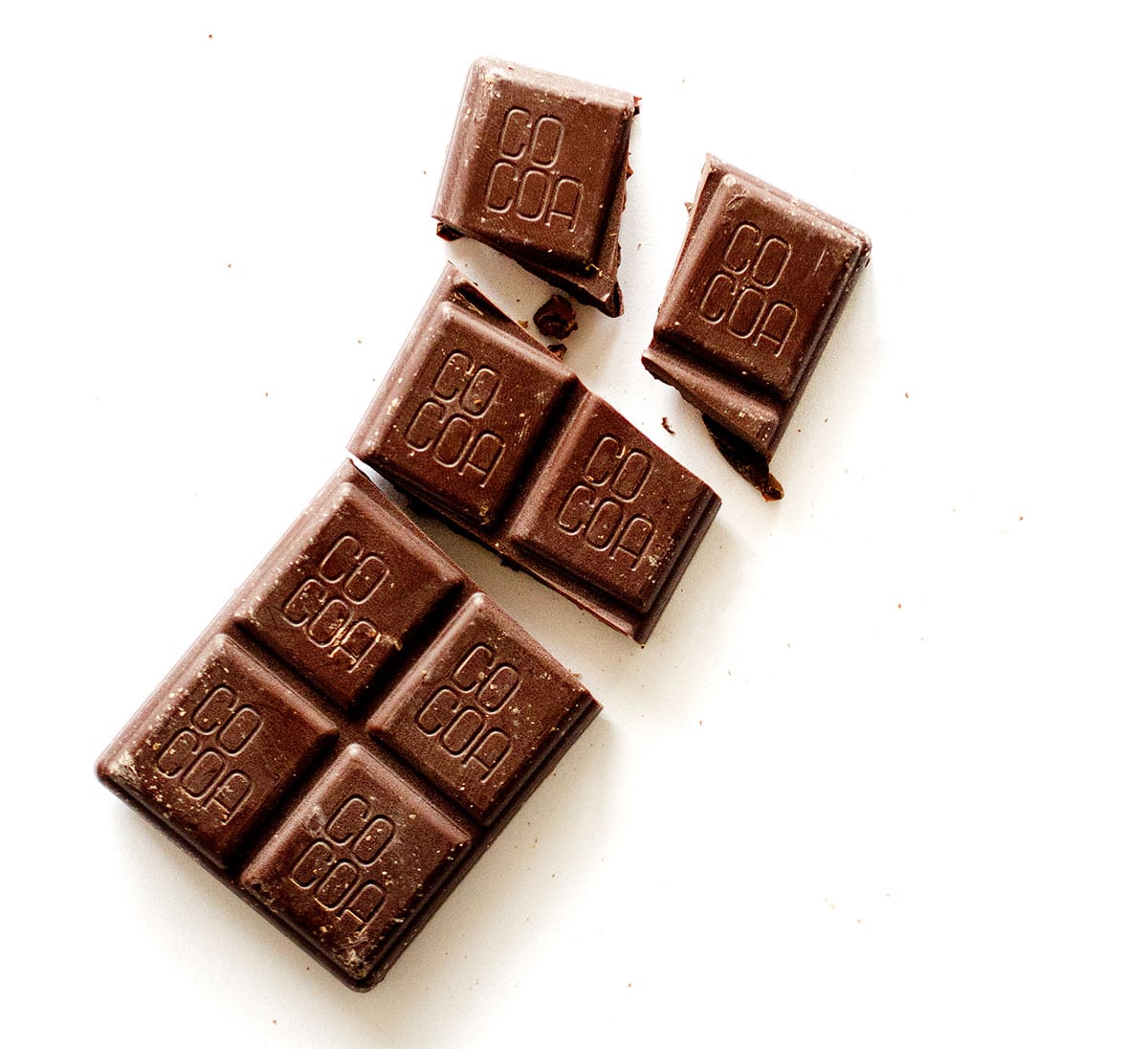
Main Varieties of chocolate
The ingredients that come from a single cacao pod can produce so many delicious end products in chocolate making!
- Cacao nibs and powder: This is the raw, unroasted cacao seed. It’s a lot more bitter than roasted cocoa but retains more of its nutrients.
- Cocoa nibs and powder: Cocoa is the roasted equivalent to cacao. It is less bitter and closer to what you may be used to eating and cooking with.
- Dutched Cocoa Powder: This is alkalized cocoa powder, meaning it has a more neutral pH and is less bitter than regular cocoa powder. It dissolves easily so it’s great for making hot cocoa!
- Dark Chocolate: Cocoa + Cocoa butter + Sugar
- Milk Chocolate: Cocoa + Cocoa butter + Sugar + Milk
- White Chocolate: Cocoa butter + Sugar + Milk
How to Store Chocolate
Chocolate bars should be stored at around 65 degrees F. Milk chocolate will last for about one year, dark chocolate for 2 years. If refrigerating (like if your house is too warm), keep in airtight container or bag. Cocoa powder lasts about 1 year once opened, though this is really just a best-by date, as it doesn’t really go bad.
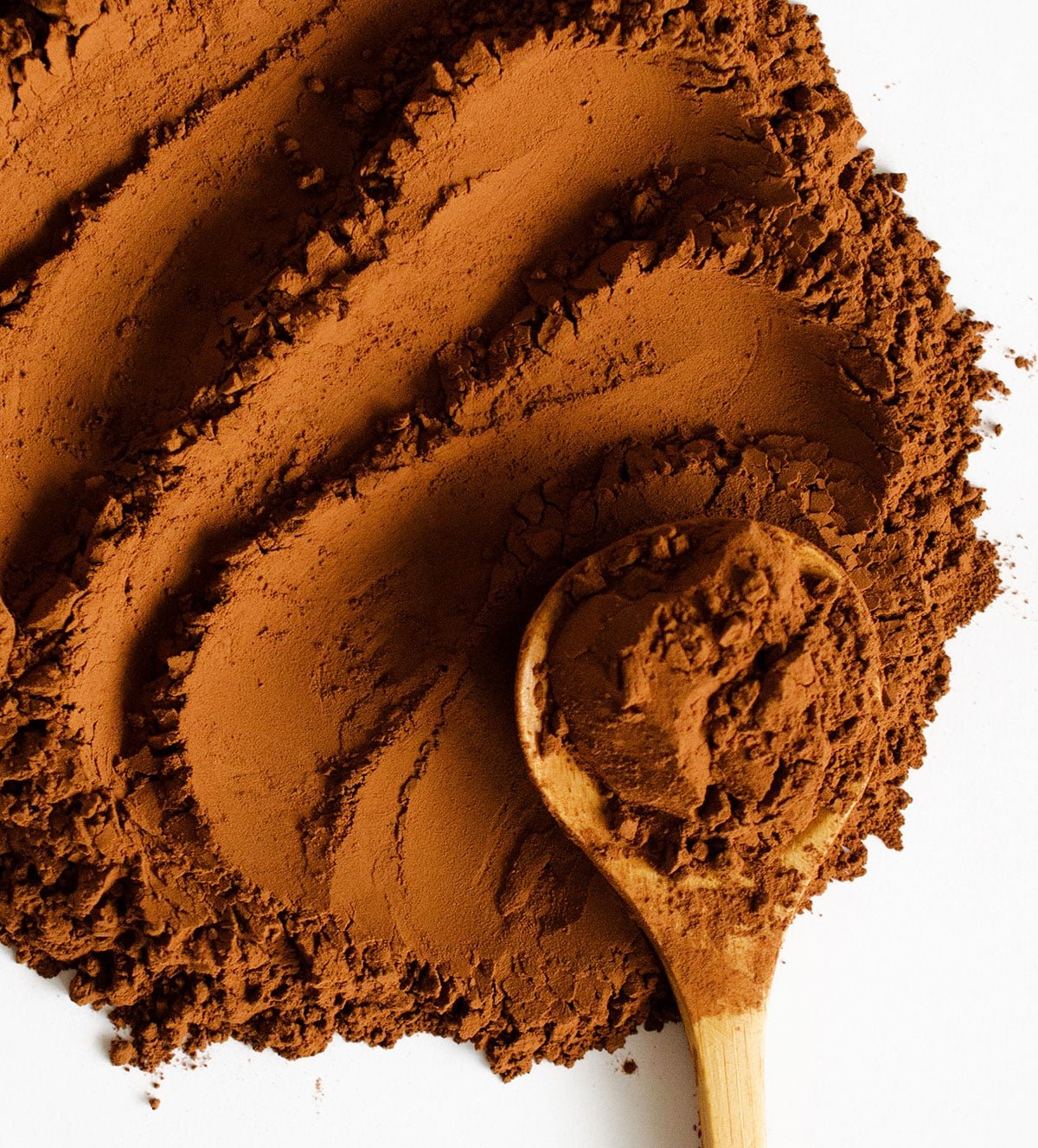
Cocoa Nutrition Information
per 1 cup (86 g) unsweetened cocoa powder
- Calories: 196
- Carbohydrates: 50 g
- Fiber: 29 g, 114% of Daily Value (DV)
- Protein: 17 g
- Fat: 12 g
- 66% DV of Iron: A major component of hemoglobin, the proteins that make up red blood cells and carry oxygen around the body. This is a non-heme source, meaning it does not come from an animal. It is not absorbed as well as heme iron.
- 12% DV of Riboflavin (Vitamin B2): A water-soluble vitamin that acts as a component of FAD to help your body break down macronutrients in the electron transport chain, creating usable energy.
- 11% DV of Calcium: 1% of the calcium in your body plays a vital role in vascular contraction/dilation and nerve transmission and signaling. The other 99% supports teeth and bone structure and function.

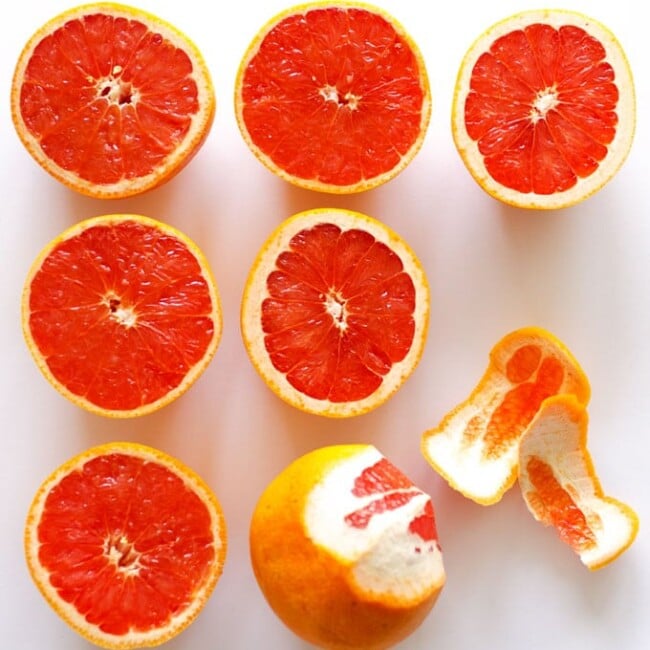
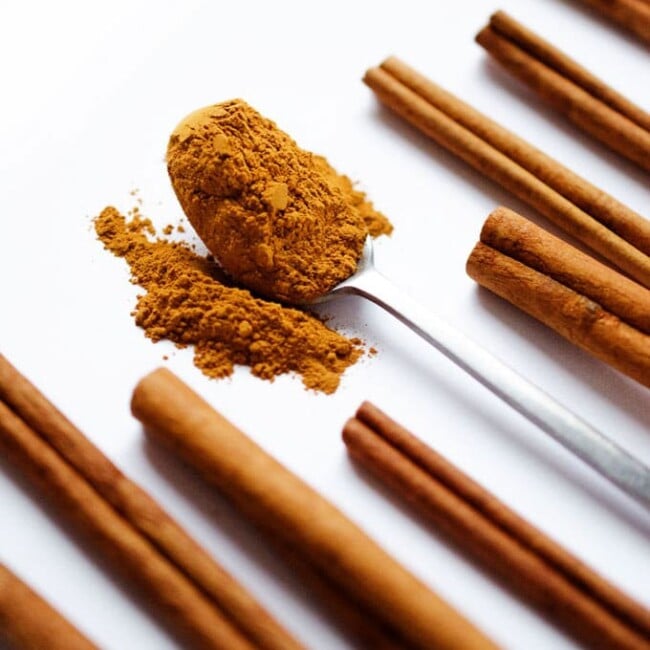
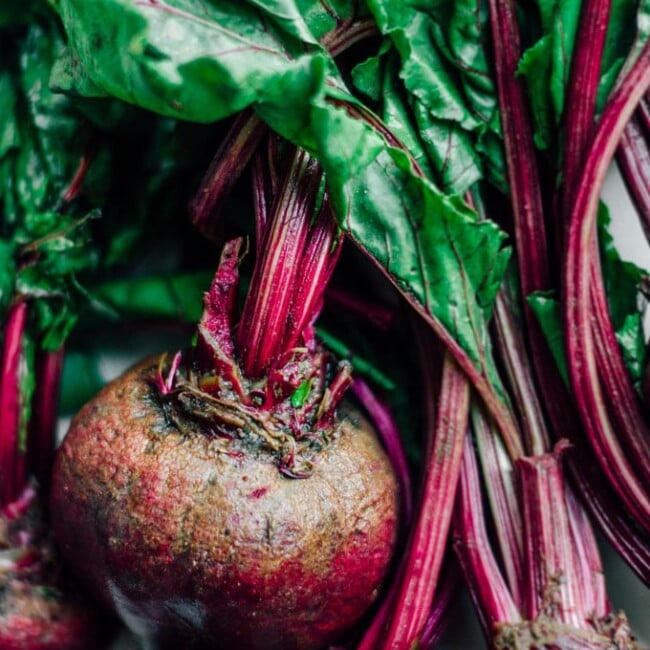
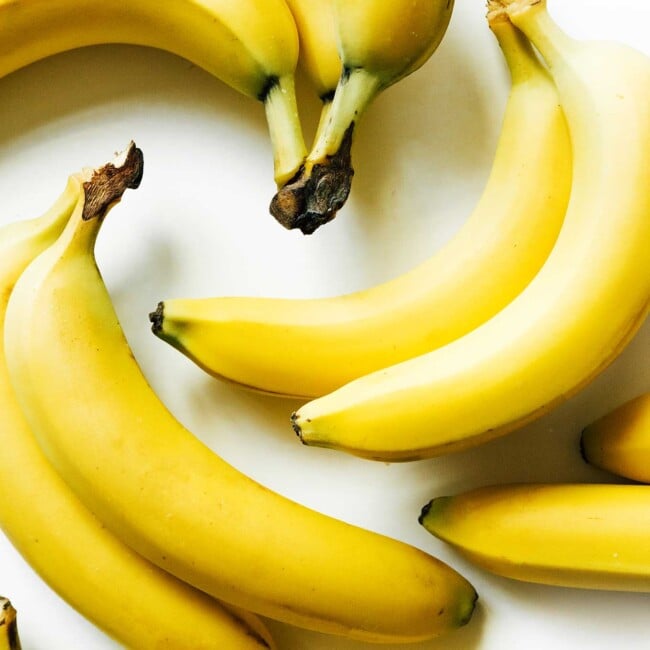
Deborah says
Thank You Very Informative
Darrell Yetman says
What about caffeine content? Does cocoa powder contain less caffeine than solid chocolate?
Sarah Bond says
I believe it contains more caffeine than chocolate actually, because there are more cocoa solids.